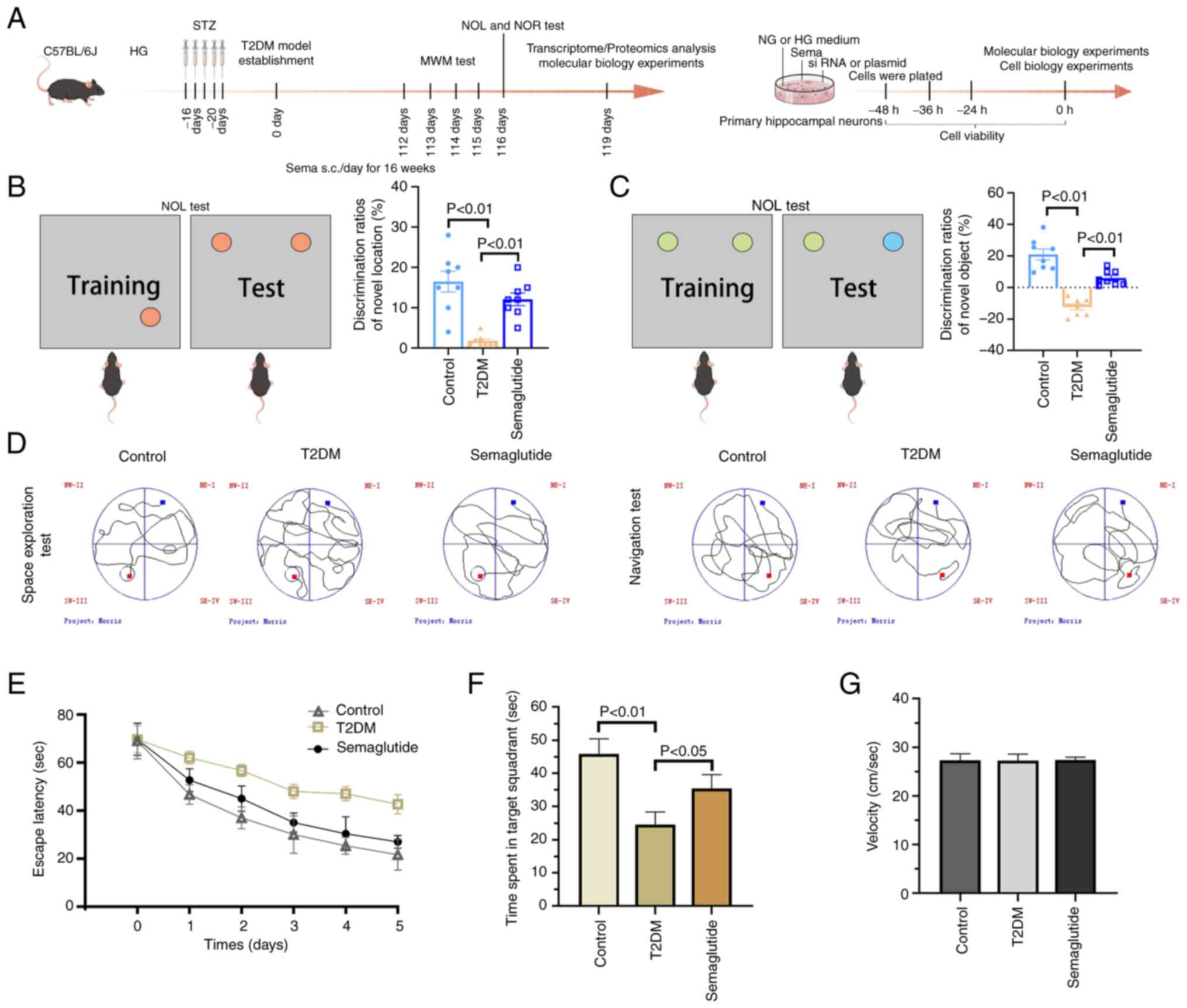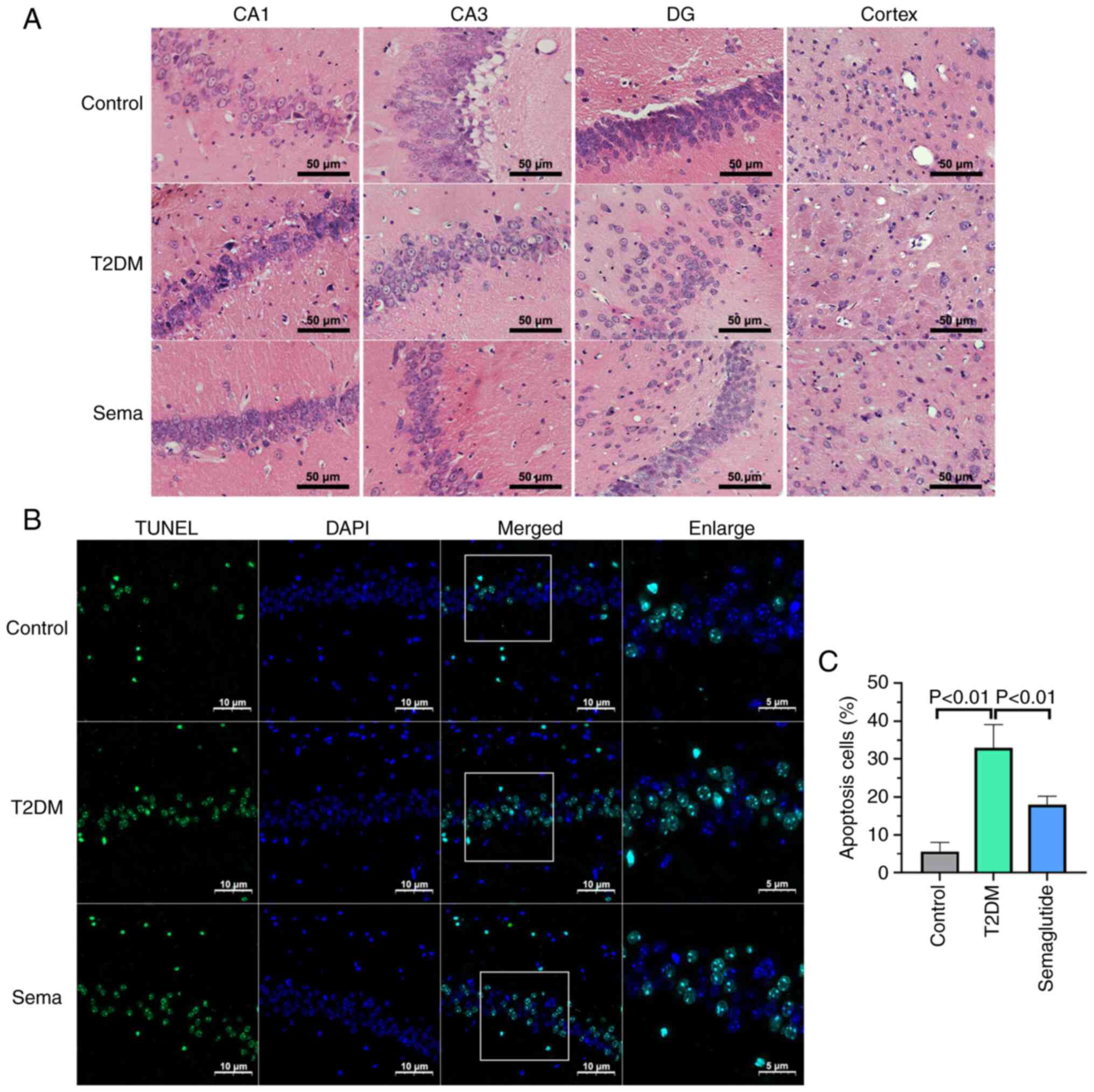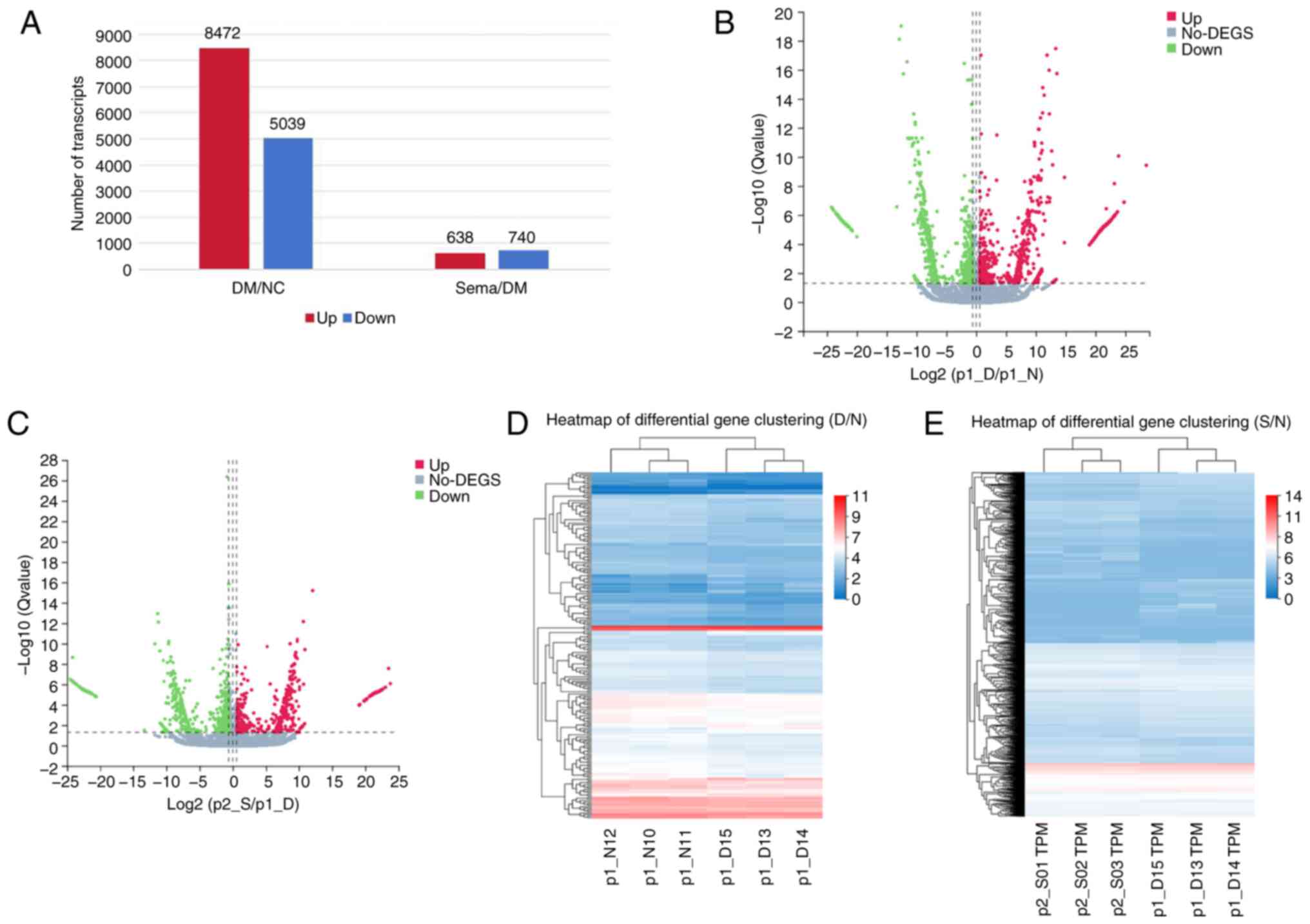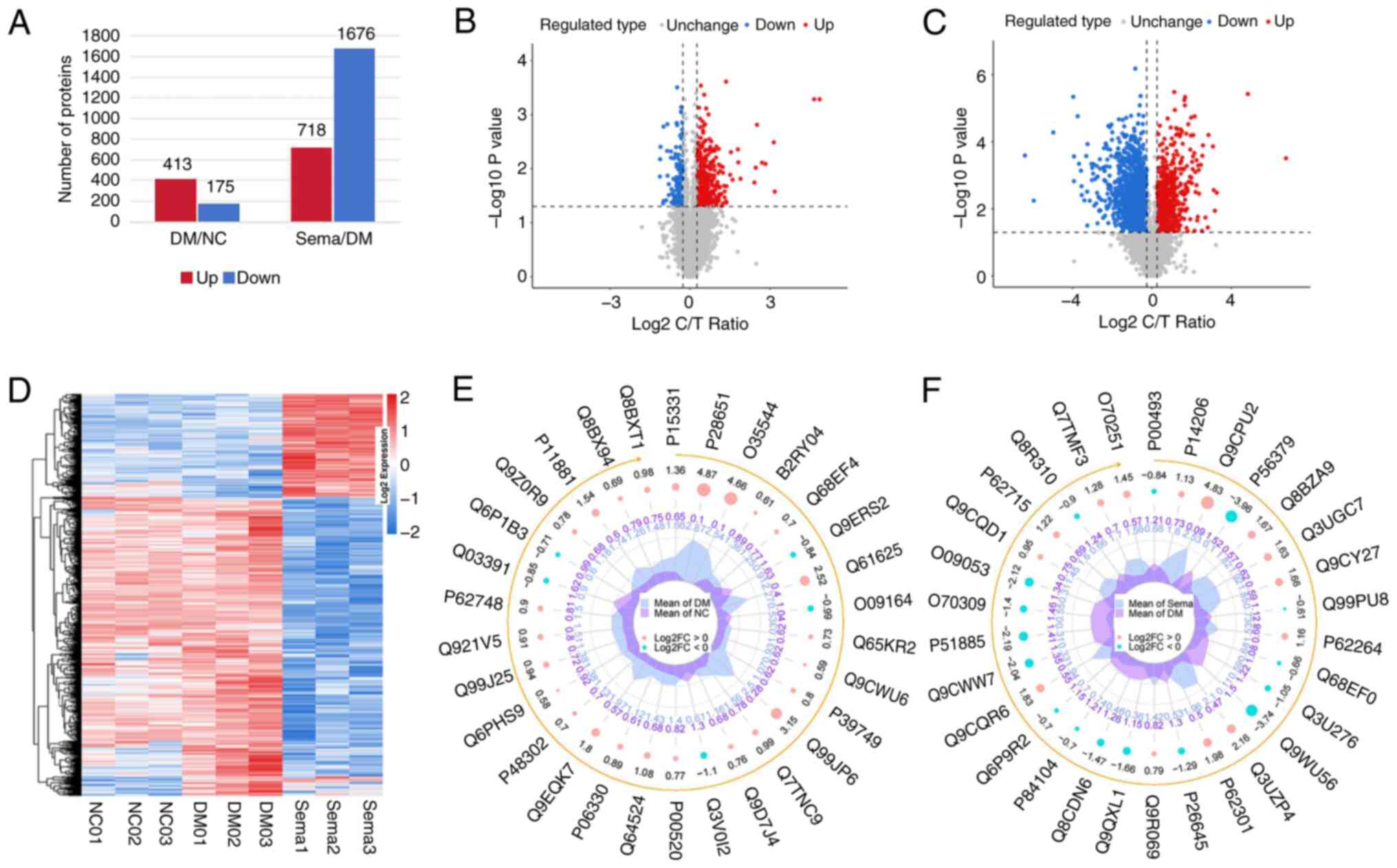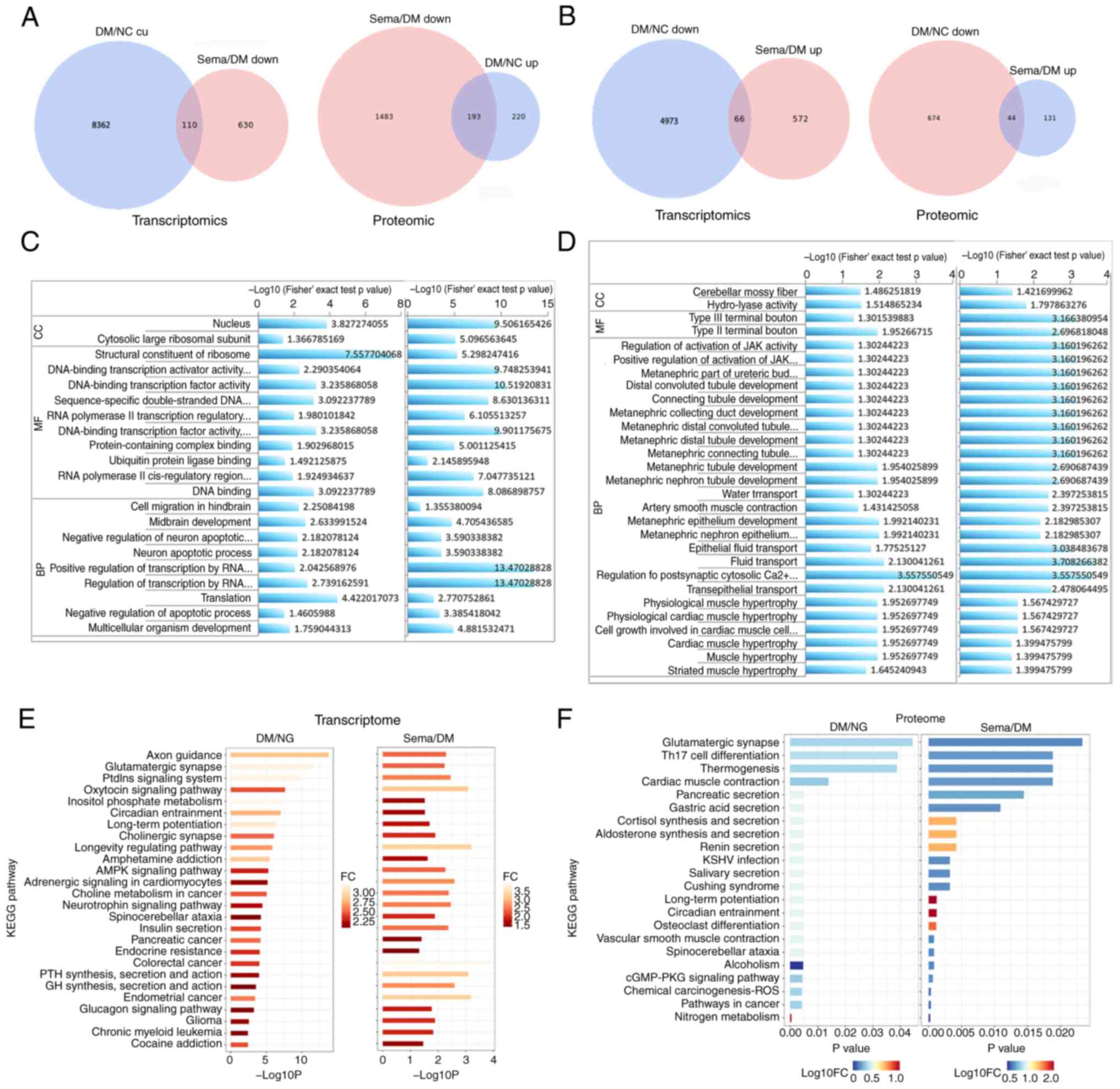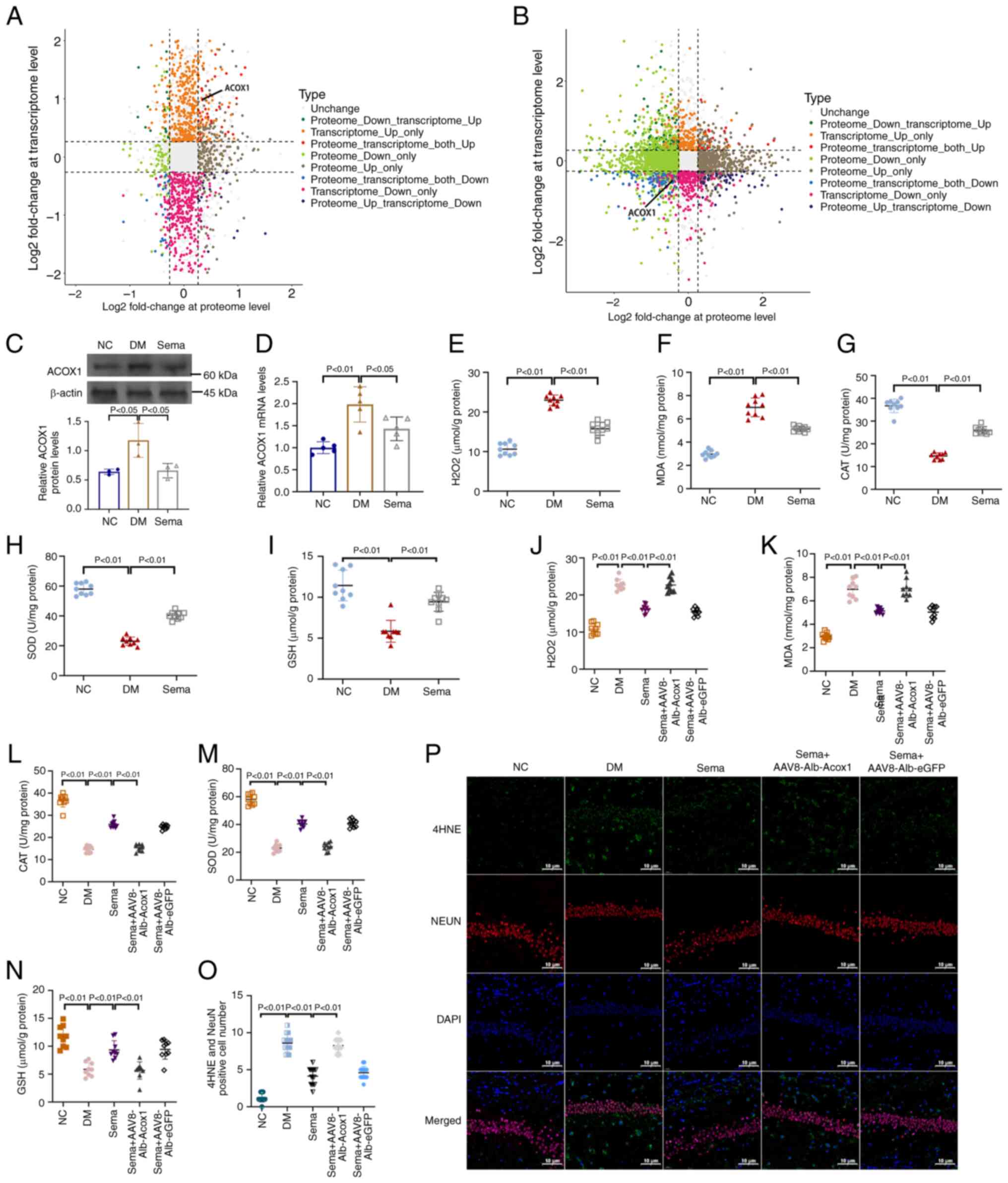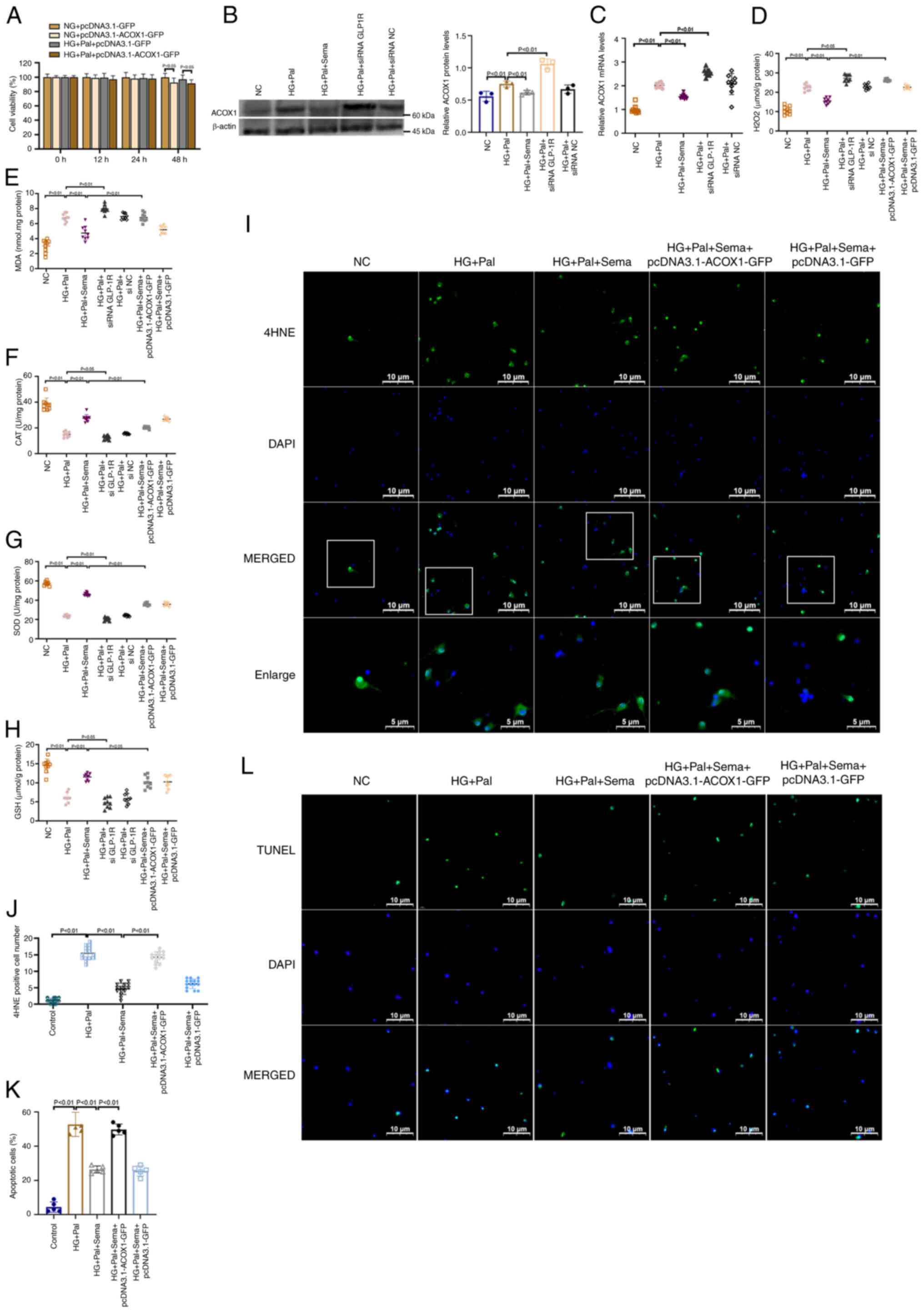|
1
|
Biessels GJ and Whitmer RA: Cognitive
dysfunction in diabetes: How to implement emerging guidelines.
Diabetologia. 63:3–9. 2020. View Article : Google Scholar
|
|
2
|
Biessels GJ and Despa F: Cognitive decline
and dementia in diabetes mellitus: Mechanisms and clinical
implications. Nat Rev Endocrinol. 14:591–604. 2018. View Article : Google Scholar : PubMed/NCBI
|
|
3
|
Moore EM, Mander AG, Ames D, Kotowicz MA,
Carne RP, Brodaty H, Woodward M, Boundy K, Ellis KA, Bush AI, et
al: Increased risk of cognitive impairment in patients with
diabetes is associated with metformin. Diabetes Care. 36:2981–2987.
2013. View Article : Google Scholar : PubMed/NCBI
|
|
4
|
Simó R, Ciudin A, Simó-Servat O and
Hernández C: Cognitive impairment and dementia: A new emerging
complication of type 2 diabetes-The diabetologist's perspective.
Acta Diabetol. 54:417–424. 2017. View Article : Google Scholar : PubMed/NCBI
|
|
5
|
Zilliox LA, Chadrasekaran K, Kwan JY and
Russell JW: Diabetes and cognitive impairment. Curr Diab Rep.
16:872016. View Article : Google Scholar : PubMed/NCBI
|
|
6
|
Shao J, Yang X, Liu T, Zhang T, Xie QR and
Xia W: Autophagy induction by SIRT6 is involved in oxidative
stress-induced neuronal damage. Protein Cell. 7:281–290. 2016.
View Article : Google Scholar : PubMed/NCBI
|
|
7
|
An Y, Xu BT, Wan SR, Ma XM, Long Y, Xu Y
and Jiang ZZ: The role of oxidative stress in diabetes
mellitus-induced vascular endothelial dysfunction. Cardiovasc
Diabetol. 22:2372023. View Article : Google Scholar : PubMed/NCBI
|
|
8
|
Mi Y, Qi G, Vitali F, Shang Y, Raikes AC,
Wang T, Jin Y, Brinton RD, Gu H and Yin F: Loss of fatty acid
degradation by astrocytic mitochondria triggers neuroinflammation
and neurodegeneration. Nat Metab. 5:445–465. 2023. View Article : Google Scholar : PubMed/NCBI
|
|
9
|
Bridge G, Rashid S and Martin SA: DNA
mismatch repair and oxidative DNA damage: Implications for cancer
biology and treatment. Cancers. 6:1597–1614. 2014. View Article : Google Scholar : PubMed/NCBI
|
|
10
|
Zhang W, Xiao D, Mao Q and Xia H: Role of
neuroinflammation in neurodegeneration development. Signal
Transduct Target Ther. 8:2672023. View Article : Google Scholar : PubMed/NCBI
|
|
11
|
Cai D: Neuroinflammation and
neurodegeneration in overnutrition-induced disease. Trends
Endocrinal Metab. 24:40–47. 2013. View Article : Google Scholar
|
|
12
|
Drucker DJ: Mechanisms of action and
therapeutic application of glucagon-like peptide-1. Cell Metab.
27:740–756. 2018. View Article : Google Scholar : PubMed/NCBI
|
|
13
|
Andersen A, Knop FK and Vilsbøll T: A
pharmacological and clinical overview of oral semaglutide for the
treatment of type 2 diabetes. Drugs. 81:1003–1030. 2021. View Article : Google Scholar : PubMed/NCBI
|
|
14
|
Chao AM, Tronieri JS, Amaro A and Wadden
TA: Semaglutide for the treatment of obesity. Trends Cardiovasc
Med. 33:159–166. 2023. View Article : Google Scholar
|
|
15
|
Marso SP, Bain SC, Consoli A, Eliaschewitz
FG, Jódar E, Leiter LA, Lingvay I, Rosenstock J, Seufert J, Mark L,
et al: Semaglutide and cardiovascular outcomes in patients with
type 2 diabetes. New Engl J Med. 375:1834–1844. 2016. View Article : Google Scholar : PubMed/NCBI
|
|
16
|
Carney EF: A pre-specified analysis of the
SELECT trial suggests a kidney benefit of semaglutide in patients
without diabetes. Nat Rev Nephrol. 20:4932024.PubMed/NCBI
|
|
17
|
Tipa RO, Balan DG, Georgescu MT, Ignat LA,
Vacaroiu IA, Georgescu DE, Raducu L, Mihai DA, Chiperi LV and
Balcangiu-Stroescu AE: A systematic review of semaglutide's
influence on cognitive function in preclinical animal models and
cell-line studies. Int J Mol Sci. 25:49722024. View Article : Google Scholar : PubMed/NCBI
|
|
18
|
Zhou TT, Quan LL, Chen LP, Du T, Sun KX,
Zhang JC, Yu L, Li Y, Wan P, Chen LL, et al: SP6616 as a new Kv2.1
channel inhibitor efficiently promotes β-cell survival involving
both PKC/Erk1/2 and CaM/PI3K/Akt signaling pathways. Cell Death
Dis. 7:e22162016. View Article : Google Scholar
|
|
19
|
McLean BA, Wong CK, Kaur KD, Seeley RJ and
Drucker DJ: Differential importance of endothelial and
hematopoietic cell GLP-1Rs for cardiometabolic versus hepatic
actions of semaglutide. JCI Insight. 6:e1537322021. View Article : Google Scholar : PubMed/NCBI
|
|
20
|
Wang ZJ, Li XR, Chai SF, Li WR, Li S, Hou
M, Li JL, Ye YC, Cai HY, Hölscher C and Wu MN: Semaglutide
ameliorates cognition and glucose metabolism dysfunction in the
3xTg mouse model of Alzheimer's disease via the GLP-1R/SIRT1/GLUT4
pathway. Neuropharmacology. 240:1097162023. View Article : Google Scholar : PubMed/NCBI
|
|
21
|
Vorhees CV and Williams MT: Morris water
maze: Procedures for assessing spatial and related forms of
learning and memory. Nat Protoc. 1:848–858. 2006. View Article : Google Scholar
|
|
22
|
Zhang B, Wang L, Zhan A, Wang M, Tian L,
Guo W and Pan Y: Long-term exposure to a hypomagnetic field
attenuates adult hippocampal neurogenesis and cognition. Nat
Commun. 12:11742021. View Article : Google Scholar : PubMed/NCBI
|
|
23
|
Warnes GR, Bolker B, Lumley T and Johnson
RC: gmodels: Various R Programming Tools for Model Fitting. R
package version. 2.18.1 edition. SAIC-Frederick, Inc.; New Jersey,
NJ: 2018
|
|
24
|
Zhang N, Jiang N, Zhang K, Zheng L, Zhang
D, Sang X, Feng Y, Chen R, Yang N, Wang X, et al: Landscapes of
protein post-translational modifications of African trypanosoma
parasites. iScience. 23:1010742020. View Article : Google Scholar
|
|
25
|
Livak KJ and Schmittgen TD: Analysis of
relative gene expression data using real-time quantitative PCR and
the 2(-Delta Delta C(T)) method. Methods. 25:402–408. 2001.
View Article : Google Scholar
|
|
26
|
Beaudoin GM III, Lee SH, Singh D, Yuan Y,
Ng YG, Reichardt LF and Arikkath J: Culturing pyramidal neurons
from the early postnatal mouse hippocampus and cortex. Nat Protoc.
7:1741–1754. 2012. View Article : Google Scholar : PubMed/NCBI
|
|
27
|
Nakashima H, Hamamura K, Houjou T, Taguchi
R, Yamamoto N, Mitsudo K, Tohnai I, Ueda M, Urano T and Furukawa K
and Furukawa K: Overexpression of caveolin-1 in a human melanoma
cell line results in dispersion of ganglioside GD3 from lipid rafts
and alteration of leading edges, leading to attenuation of
malignant properties. Cancer Sci. 98:512–520. 2007. View Article : Google Scholar : PubMed/NCBI
|
|
28
|
Srikanth V, Sinclair AJ, Hill-Briggs F,
Moran C and Biessels GJ: Type 2 diabetes and cognitive
dysfunction-towards effective management of both comorbidities.
Lancet Diabetes Endocrinol. 8:535–545. 2020. View Article : Google Scholar : PubMed/NCBI
|
|
29
|
Vagelatos NT and Eslick GD: Type 2
diabetes as a risk factor for Alzheimer's disease: The confounders,
interactions, and neuropathology associated with this relationship.
Epidemiol Rev. 35:152–160. 2013. View Article : Google Scholar : PubMed/NCBI
|
|
30
|
Zhang J, Chen C, Hua S, Liao H, Wang M,
Xiong Y and Cao F: An updated meta-analysis of cohort studies:
Diabetes and risk of Alzheimer's disease. Diabetes Res Clin Pract.
124:41–47. 2017. View Article : Google Scholar : PubMed/NCBI
|
|
31
|
Ennis GE, Saelzler U, Umpierrez GE and
Moffat SD: Prediabetes and working memory in older adults. Brain
Neurosci Adv. 4:23982128209617252020. View Article : Google Scholar : PubMed/NCBI
|
|
32
|
Koekkoek PS, Kappelle LJ, van den Berg E,
Rutten GE and Biessels GJ: Cognitive function in patients with
diabetes mellitus: Guidance for daily care. Lancet Neurol.
14:329–340. 2015. View Article : Google Scholar : PubMed/NCBI
|
|
33
|
Arnold SE, Arvanitakis Z, Macauley-Rambach
SL, Koenig AM, Wang HY, Ahima RS, Craft S, Gandy S, Buettner C,
Stoeckel LE, et al: Brain insulin resistance in type 2 diabetes and
Alzheimer disease: Concepts and conundrums. Nat Rev Neurol.
214:168–181. 2018. View Article : Google Scholar
|
|
34
|
Liu Z, Dai X, Zhang H, Shi R, Hui Y, Jin
X, Zhang W, Wang L, Wang Q, Wang D, et al: Gut microbiota mediates
intermittent-fasting alleviation of diabetes-induced cognitive
impairment. Nat Commun. 11:8552020. View Article : Google Scholar : PubMed/NCBI
|
|
35
|
Marseglia A, Fratiglioni L, Kalpouzos G,
Wang R, Bäckman L and Xu W: Prediabetes and diabetes accelerate
cognitive decline and predict microvascular lesions: A
population-based cohort study. Alzheimers Dement. 15:25–33. 2019.
View Article : Google Scholar
|
|
36
|
Maskery MP, Holscher C, Jones SP, Price
CI, Strain WD, Watkins CL, Werring DJ and Emsley HC: Glucagon-like
peptide-1 receptor agonists as neuroprotective agents for ischemic
stroke: A systematic scoping review. J Cereb Blood Flow Metab.
41:14–30. 2021. View Article : Google Scholar :
|
|
37
|
Billing AM, Kim YC, Gullaksen S, Schrage
B, Raabe J, Hutzfeldt A, Demir F, Kovalenko E, Lassé M, Dugourd A,
et al: Metabolic communication by SGLT2 inhibition. Circulation.
149:860–884. 2024. View Article : Google Scholar :
|
|
38
|
Sachs S, Niu L, Geyer P, Jall S, Kleinert
M, Feuchtinger A, Stemmer K, Brielmeier M, Finan B, DiMarchi RD, et
al: Plasma proteome profiles treatment efficacy of incretin dual
agonism in diet-induced obese female and male mice. Diabetes Obes
Metab. 23:195–207. 2021. View Article : Google Scholar
|
|
39
|
Hashimoto T: Peroxisomal beta-oxidation:
Enzymology and molecular biology. Ann NY Acad Sci. 804:86–98. 1996.
View Article : Google Scholar : PubMed/NCBI
|
|
40
|
Van Veldhoven PP, Vanhove G, Assselberghs
S, Eyssen HJ and Mannaerts GP: Substrate specificities of rat liver
peroxisomal acyl-CoA oxidases: Palmitoyl-CoA oxidase (inducible
acyl-CoA oxidase), pristanoyl-CoA oxidase (non-inducible acyl-CoA
oxidase), and trihydroxycoprostanoyl-CoA oxidase. J Biol Chem.
267:20065–20074. 1992. View Article : Google Scholar : PubMed/NCBI
|
|
41
|
Reddy JK and Mannaerts GP: Peroxisomal
lipid metabolism. Annu Rev Nutr. 14:343–370. 1994. View Article : Google Scholar : PubMed/NCBI
|
|
42
|
Huang J, Jia Y, Fu T, Viswakarma N, Bai L,
Rao MS, Zhu Y, Borensztajn J and Reddy JK: Sustained activation of
PPAR by endogenous ligands increases hepatic fatty acid oxidation
and prevents obesity in ob/ob mice. FASEB J. 26:628–638. 2012.
View Article : Google Scholar :
|
|
43
|
Huang J, Viswakarma N, Yu S, Jia Y, Bai L,
Vluggens A, Cherkaoui-Malki M, Khan M, Singh I, Yang G, et al:
Progressive endoplasmic reticulum stress contributes to
hepatocarcinogenesis in fatty acyl-CoA oxidase 1-deficient mice. Am
J Pathol. 179:703–713. 2011. View Article : Google Scholar : PubMed/NCBI
|
|
44
|
Chung HL, Wangler MF, Marcogliese PC, Jo
J, Ravenscroft TA, Zuo Z, Duraine L, Sadeghzadeh S, Li-Kroeger D,
Schmidt RE, et al: Loss-or gain-of-function mutations in ACOX1
cause axonal loss via different mechanisms. Neuron. 106:589–606.e6.
2020. View Article : Google Scholar
|
|
45
|
Cobley JN, Fiorello ML and Bailey DM: 13
reasons why the brain is susceptible to oxidative stress. Redox
Biol. 15:490–503. 2018. View Article : Google Scholar : PubMed/NCBI
|
|
46
|
Cenini G, Lloret A and Cascella R:
Oxidative stress in neurodegenerative diseases: From a
mitochondrial point of view. Oxid Med Cell Longev.
2019:21056072019. View Article : Google Scholar : PubMed/NCBI
|
|
47
|
Brubaker PL and Drucker DJ: Minireview:
Glucagon-like peptides regulate cell proliferation and apoptosis in
the pancreas, gut, and central nervous system. Endocrinology.
145:2653–2659. 2004. View Article : Google Scholar : PubMed/NCBI
|
|
48
|
During MJ, Cao L, Zuzga DS, Francis JS,
Fitzsimons HL, Jiao X, Bland RJ, Klugmann M, Banks WA, Drucker DJ
and Haile CN: Glucagon-like peptide-1 receptor is involved in
learning and neuroprotection. Nat Med. 9:1173–1179. 2003.
View Article : Google Scholar : PubMed/NCBI
|
|
49
|
Dhillon S: Semaglutide: First global
approval. Drugs. 78:275–284. 2018. View Article : Google Scholar : PubMed/NCBI
|
|
50
|
Liu XY, Wang LX, Chen Z and Liu LB:
Liraglutide prevents beta-amyloid-induced neurotoxicity in SH-SY5Y
cells via a PI3K-dependent signaling pathway. Neurol Res.
38:313–319. 2016. View Article : Google Scholar : PubMed/NCBI
|
|
51
|
Chen X, Ma L, Gan K, Pan X and Chen S:
Phosphorylated proteomics-based analysis of the effects of
semaglutide on hippocampi of high-fat diet-induced-obese mice.
Diabetol Metab Syndr. 15:632023. View Article : Google Scholar : PubMed/NCBI
|
|
52
|
Sadek MA, Kandil EA, El Sayed NS, Sayed HM
and Rabie MA: Semaglutide, a novel glucagon-like peptide-1 agonist,
amends experimental autoimmune encephalomyelitis-induced multiple
sclerosis in mice: Involvement of the PI3K/Akt/GSK-3β pathway. Int
Immunopharmacol. 115:1096472023. View Article : Google Scholar
|



